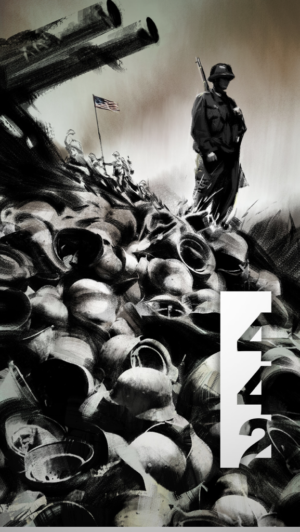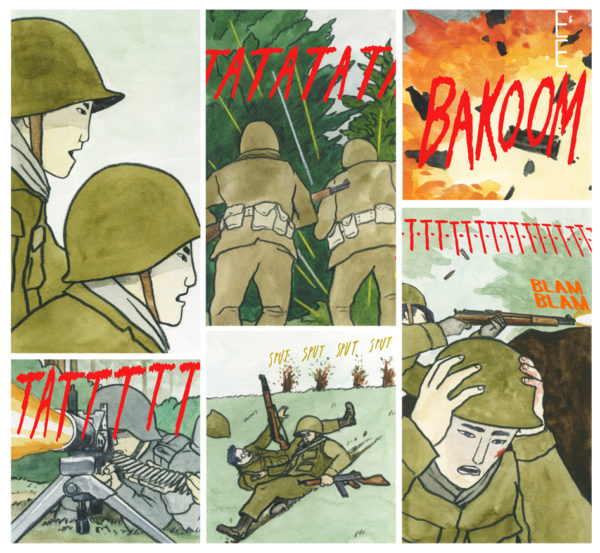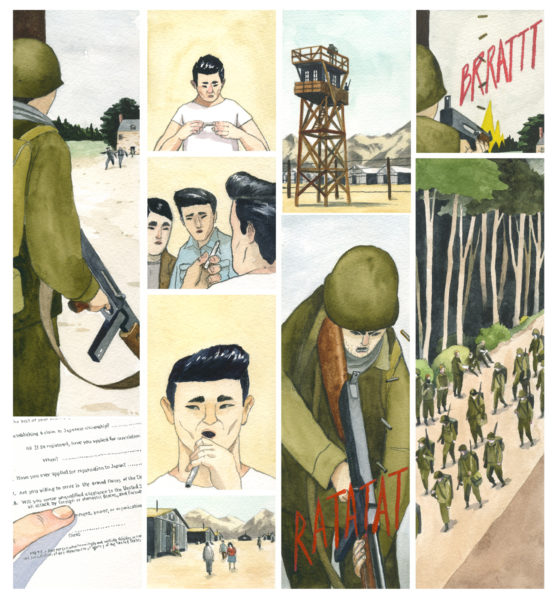 The first six chapters of my new graphic novel “442” have been released for free on the comic reading app “Stela Unlimited”.
The first six chapters of my new graphic novel “442” have been released for free on the comic reading app “Stela Unlimited”.
Written by Phinny Kiyomuraa and myself, and illustrated (in beautiful watercolor) by Robert Sato, “442” is based on one of World War II’s most compelling and important stories. The 442nd Regimental Combat Team was the U.S. Army’s Japanese American segregated fighting regiment. The 442nd would become the most decorated unit of the War, and the most decorated unit of its size and length of service in American history. Even with their families confined behind barbed wire in American concentration camps, these soldiers fought to rescue a Texas battalion lost behind enemy lines. A fictionalized account based on the actual events, “442” follows young Japanese Americans soldiers as they suffer prejudice, internment and terrible casualties in their battle to rescue the Lost Battalion.
“442” releases on a historic weekend. Sunday, February 19th, is known in the Japanese American community as the “Day of Remembrance” and marks the 75th anniversary of Executive Order 9066 which authorized the imprisonment of up to 120,000 people of Japanese ancestry, around two thirds of whom were American citizens.
Here is a sample of some of Rob’s amazing artwork:

I sat down with my collaborators and asked them a few questions:
Phinny, how did you get involved in 442?
I’m a playwright and TV writer from Long Beach, CA. My dad and all of his side of the family were sent to the camps when he was two-years-old. I eventually ended up writing a TV pilot set in an Internment Camp, called, wait for it — INTERNMENT. Super creative title. But it’s a concept that I’m very excited about — mixing a personal love for early/mid 20th-century playwriting (Arthur Miller, Tennessee Williams, Harold Pinter) with the not-all-that-often-discussed history of the camps. The pilot ended up getting a reading at the Japanese American National Museum which is where I met Koji. He and I talked about the 442, and, specifically the battle to save the Lost Battalion and decided to start working together, first on a movie of this story, and, later, on this graphic novel for Stēla.
Rob, what about you?
My grandfather was in the 442. He was drafted while imprisoned in the Jerome, Arkansas camp, and fought in Europe while his parents and 4 siblings remained incarcerated, putting his life on the line for a the country that had kicked his family out of their home, stripped them of what they had worked for over the course of their lives as well as all of their personal freedoms and their American citizenship. This story feels like it’s in my bones. I grew up with it shaping a major part of my world view. How could it not? I feel perhaps I’ve taken it for granted until recently that the overall history of the Japanese American experience was known and understood by the general culture.

And Rob, why was this project so important to you?








